#Kowloon City
Text

68 notes
·
View notes
Photo
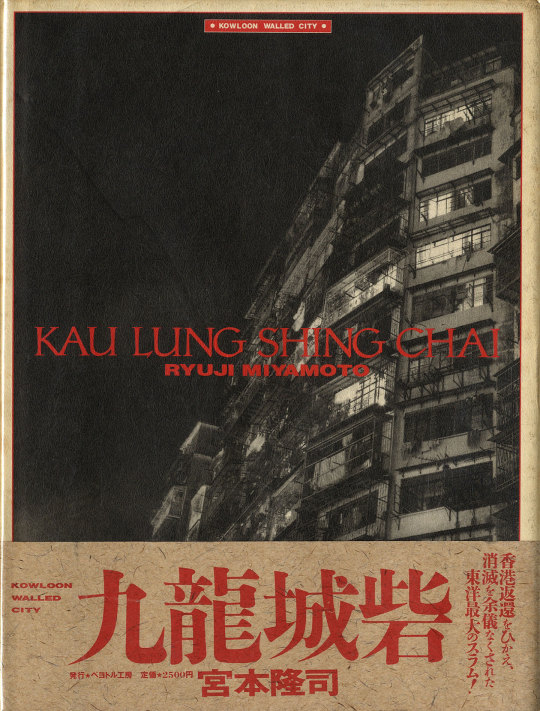
Ryuji Miyamoto /Japanese, born 1947
Kau Lung Shing Chai (Kowloon Walled City)
... Miyamoto's dystopian night views of Kowloon's streets and alleyways create an ominous sensation, as if one cannot escape the walled city.
© 2022 Vincent Borrelli, Bookseller.
#ryuji miyamoto#kowloon walled city#hong kong#kowloon city#ryūji miyamoto#japanese photography#book cover#photography#mu photo#mu#vincent borrelli#20 photo#20 notes
29 notes
·
View notes
Text
Jan 4, 2023 - a lovely day!!
I just had a really good day today that I want to make sure I remember so I'm making an honest to god blog, a straight up rambling diary entry. Just like I used to on LiveJournal, wow.
I do not expect anyone to read this. I just want to remember my lovely day. It was filled with nostalgia, good food, history, productivity, genuine exercise(?!), photos, and of course, BTS.
I've been on holiday since December 30th because I have a benevolent boss (perks of working at a small company) who lets our annual leave spill over a tiny bit since it's still "Christmas" break. I was socially engaged the nights of Dec29/Jan1 as well as the afternoon of Dec30, plus I was furiously writing updates for the DnD ficlet collection since it was Tae's birthday and trying to finish up Ch1 of the Regency sequel, Pirate fic, whenever I was at home during this time so it did not feel restful at all. It was only on Jan2 where I could pull a Kim Seokjin and completely sequester myself at home and veg out -- woke up at noon and played Stardew Valley for like, 6 hours. Jan3 required me to be a functional adult again so I cleaned the flat and tried to hash out the pirate fic before realising it was going to take wayyyy more work, so I've earmarked Marryat and Forester books to check out from HK Central when I go to CWB on Saturday. (Apparently Jimin has a massive Dior ad on the Sogo screen, so I will also be going there after my haircut. Whoo!!)
Which brings us to January 4th! A Thursday. Historically, Thursdays have been good to me and this was no exception. I woke up later than I intended, around 10 AM, and then the sheer pleasure of being in a comfortable bed without needing to be anywhere stretched my lie-in to 10:30. After the basics of room tidying and washing up, I had leftover pasta for breakfast and played In the Seom while waiting out the 30min I'm supposed to have between eating and taking my Chinese meds. Then it was washing up, getting dressed, packing up the devices after charging them all morning to give myself a little day trip to...
Kowloon City! My childhood 'hood. And now that I've moved back across the harbour, pressing play on The Most Beautiful Moment in Life: Young Forever while walking out the door meant that by the time I got out in Sung Wong Toi station, my earbuds were appropriately blaring Ma City. (Okay, I did repeat Run because that's my favourite title track.) I made a beeline for Islam Food because I haven't had delicious halal Xinjiang cuisine in forever except I was an unfortunate bee with poor scent receptors since I forgot where it was and ended up looping around Nga Tsin Wai for a while... we were on Converse High by the time I found the resto, that's how long it took. At almost 2 PM was nearly full but not proper crowded, and mostly with older people which is par the course for Kowloon City. As a single I got a tiny table in the corner immediately and ordered a classic beef patty + bok choy and tofu soup. If I were with a larger group, I would have also gotten mutton xiaolongbao, scallion pancakes, and a curry so I will have to drag some people here again soon. Food was prompt and only $65 so I was done eating in 20 minutes tops.
Thanks to climate change, it was a balmy sunny afternoon so I stuffed my jacket into my backpack and headed on over to KCP. It's changed a LOT since I was a teenager -- no Park'n Shop in the basement selling eel and chicken rice boxes for $20 anymore, sigh. But I did get a Coco Milk Tea (half sweet, less ice) for $22 which is a VERY good price nowadays, you can't get anything in Central under $27 minimum ($30 on average) for example and it doesn't even taste as good?? But armed with my delicious tea, I was ready to go out the other way into Carpenter Park, which looks literally the same as when I was a kid. I spent a solid decade running around this park. There isn't a bouncy dinosaur anymore so I know it's not exactly the same, but the bicycle paths are the same, the rock garden where Sam filmed his lightsabre battles is the same... and Kowloon Walled City of course is the same.
...from when I was a child, not when it was THE Walled City. (Once, when everywhere at school was occupied, our drama class rehearsed our play in the Zodiac garden much to the tai-tais' collective chagrins.) Full disclosure that I actually came here in mid-December as well to gather inspo and info for my piece for the Ma City zine which is set in 80s KWC, so this time I didn't go look at the exhibits and just went straight to the chess garden since that's the only spot with tables. I set up my laptop and finished the piece to the soundtrack of construction, which I find very appropriate considering the topic. We don't get planes howling overhead anymore, so this will have to do.
Last time, I had to meet friends islandside for dinner so I actually walked up closer to Wong Tai Sin to take the bus but this time, it was only 4:15 and the day was just for me, for me! So after taking some pics in the bonsai garden in honour of Namjoon, I walked back to Junction Road and that was when I started taking pics for nostalgia -- down the street towards Ho Man Tin for the hundreds of times we ran for the bus stop, then up towards Munsang where my old school campus used to be. No, I didn't go to Munsang, I am very clearly an Intl school kid and we were across from them. The buildings are connected to Bethel Seminary which is Grade II protected so still there. I started walking up Junction Road towards Lok Fu when I saw the Stone Houses and stopped by.
These buildings weren't open when I was a kid; I remember passing them but hardly taking notice. Essentially, they are remnants of the oldest tenement buildings in the area, now refurbished as a cafe and museum. The server in the cafe immediately offered me a menu most kindly, but since it was 4:30 and I was already full on tea I politely declined. Checked out the museum though which is small and all in Chinese, no English, but I think the photos and maps would still be worth it for a non-reader. The whole thing strongly reminded me of the Mei Ho House museum and cafe too, even with their menu which is very Hong Kong cha chaan teng-esque. AND they have wi-fi!! So I'm totally planning on coming back for another writing session.
Since it was barely evening, I decided to hike Checkerboard Hill. Back when Kai Tak was still operating, the only way pilots could land planes was to come from the west, over Tsing Yi and Mei Foo Sun Chuen and barely across Kowloon City. With all the urban area underneath, there couldn't be proper signals so what they did was paint an enormous red-and-white checkerboard on the west and south sides of this hill to let the pilots know it was time to make that sharp 47 degree turn into the harbour airstrip. I distinctly recall being a preteen standing in the middle of the asphalt football (soccer to all y'all Yanks) pitch in Kowloon Tsai Park squinting up and thinking, "Why is it painted like that?" Later as a young adult, I found out. Now in my early 30s, I was going to actually go there.
Now ever since my former regular dance studio became a Covid cluster in 2020 and I also joined a choir whose rehearsals took its place on Monday evenings, I am far less fit than I could be. This was evident when I started up this hill -- which was NOT HARD at all, I am just pathetically out of shape. It took less than 15 minutes to reach the summit garden, where I did another confused bumblebee loop looking for the checkerboard and instead found: the electricity station, the weather station, some diligently preserved water tunnels from the 1940s-60s, and an irate woman screaming and swearing at a couple who accidentally took their dogs into the no-pets zone of the park. With the dulcet notes of "diu! bak po!" echoing behind me, I snapped some lovely views of Lion Rock then surreptitiously googled how to get to the checkerboard, discovering that indeed I was supposed to clamber over the stile and carefully tread the VERY narrow ditch outside of the fence (with a super steep slope studded with trees not a foot to the right) to get there.
So I did and the view was beautiful!! I was lucky to reach it at the twilight hour with an orange sun tinging everything as it moseyed on down to the horizon. Facing south you could see all of Kowloon City, all the way to Kwun Tong and Kowloon Bay on the left and Yau Tsim Mong on the right! Directly in front was even the IFC across the harbour. Directly below, Kowloon Tsai Park and those very sports fields from my youth. Somebody named Zach was playing tennis because his partner kept yelling encouragement, but I felt if I cheered "Yeah Zach, you can do it!" back down at them it would be creepy. So instead I took a lot of photos here, including some selfies on the middle layer smack centre of the checkerboard in which it was clear that I truly need a haircut which will happen under Jimin's watchful gaze in CWB come Saturday.
Finally, I climbed down the stairs and was sorely tempted to jump a gate to get into Kowloon Tsai because I know that park like the back of my foot (like, not SUPER well since it's been a long time but I would not get lost; I've run cross country around this park so many times) but in the end was a Good Honest Civilian and went back the way I came. I was feeling incredibly nostalgic at this point, so back on Junction Road I popped in my earbuds and replaced BTS with the Used for that extra mid-2000s angst. Spotify understood the brief and fed me Taking Back Sunday and Yellowcard while I followed the usual path through Morse Park, the way my almost-first-boyfriend Darren taught me in middle school. His favourite band was Jimmy Eat World, so it was perfect. With the memories of Preston's dad teaching me to play baseball on the artificial turf and when Grace came with me to Jusco so we could buy Neopets tamagotchis, I descended into the MTR and took the train home.
(At my stop, I got groceries including sushi for dinner, which I ate while watching Beyond the Star then after a break, took a massage in the chair while playing Stardew because my body is already paying the price for my impromptu hike today. Then I wrote this down before I could forget everything.)
It was a wonderful day, truly. I did everything I wanted to do and a little more, and I know what I want to do again when I inevitably come back. Hong Kong is changing because everything changes, but being in Kowloon City felt like nestling into a warm divot in the blankets. Like Joon said, you couldn't pay me millions to want to be from anywhere else. Like Hobi said, the heat will get to you but it's charged with the passion of its people. I'll be riding and dying in ma city until there's no other choice, which I know is sooner rather than later but for now, it's still Ma City.
#starcastic sighs#in happiness because she had a nice day.#Kowloon City#Kowloon Walled City#Checkerboard Hill#Hong Kong
0 notes
Text

Oh sick this photography book I ordered came with free snacks
#catie talks#I won’t actually eat these#I did eat one once and they don’t taste very good#the book is City Of Darkness by greg girard btw!!#it’s all photos taken inside Kowloon Walled City before it was demolished
34K notes
·
View notes
Text
Though actually, cute thing: there are "standard" photos of the Kowloon Walled City that are always passed around, and they tend to be the most modern ones due to quality & availability reasons:

But these are from a unique period in its history, namely the end of its history - right before it was demolished. However, it wasn't the only thing to go; its removal was part of a much wider project to level and redevelop the entire area of the Kowloon City District. It just happened to be the last part to go due to its size and legal complexity. That "island of concrete in a desert" look is essentially a fiction:
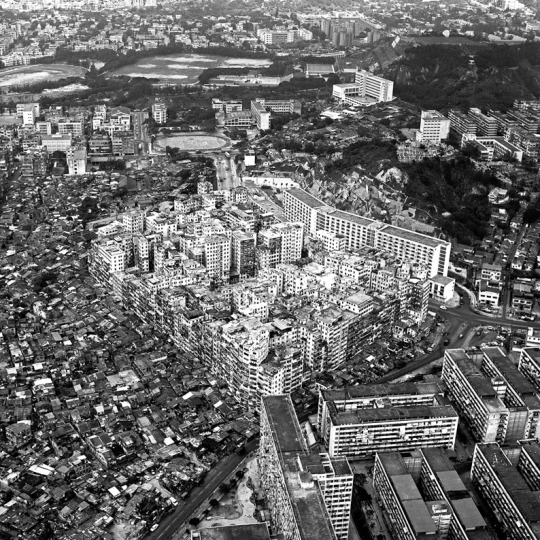
It was really the heart of a dense urban ecology of low-income development that had emerged over 30+ years in the postwar era.
And you can see how integrated it was with its surroundings, the "walls" were after all purely a legal concept:

The common photos imo are also popular because they heighten the dystopian aspects of the city, making it appear like a tumor infecting the area. Once you see it in its proper context its place as an organic part of the city is much more clear.
4K notes
·
View notes
Text

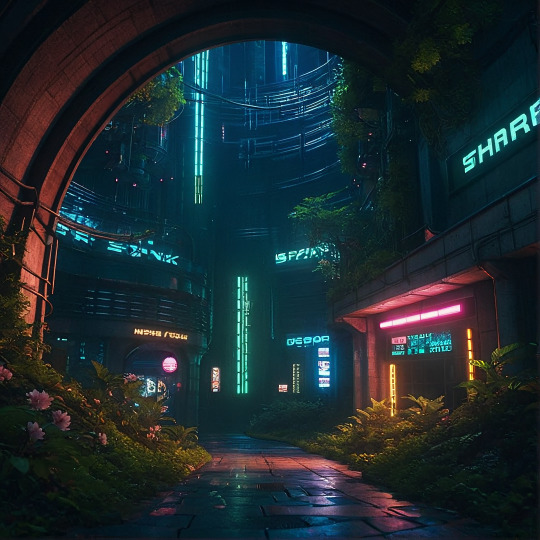




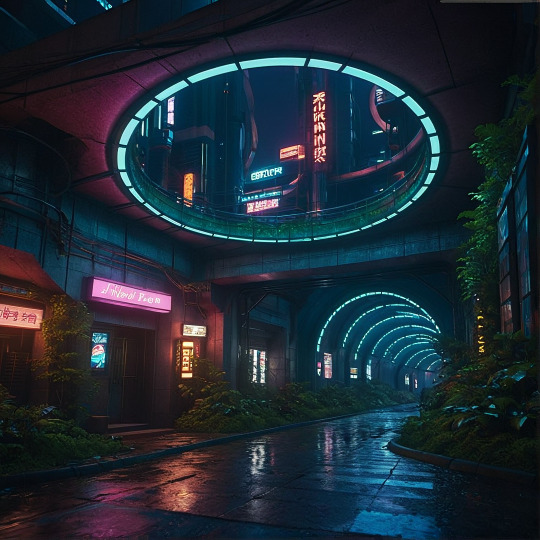
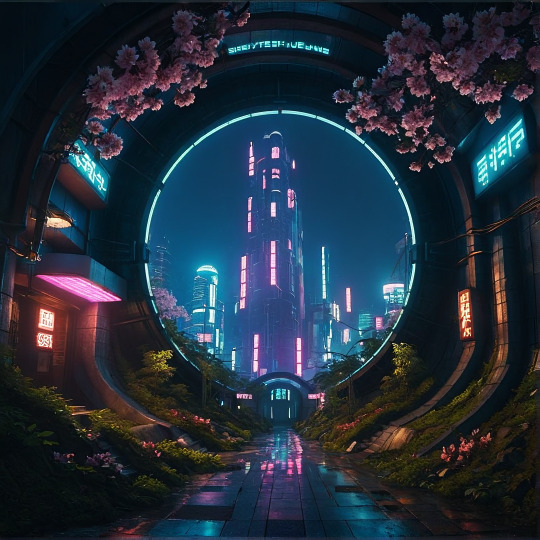
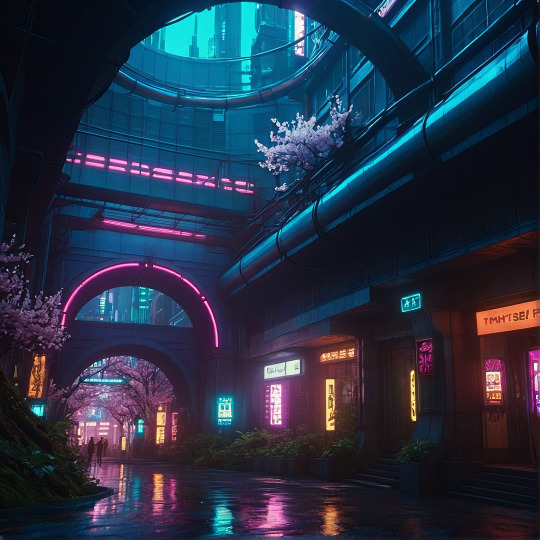

By jilt with stablediffusion
Cyberpunk art commissions
Ko-Fi
My free workflows
#nestedneons#cyberpunk#cyberpunk art#cyberpunk aesthetic#art#cyberpunk artist#cyberwave#megacity#futuristic city#scifi#scifi art#scifi aesthetic#scifi world#urban jungle#slum#underdog#underground#kowloon#neon city#neonwave#neoncore#pastel#pastelcore#pastel art#pastelgoth#ai art#thisisaiart#solarpunk#dreamcore
530 notes
·
View notes
Text

"Kowloon Walled City—Caged Balconies," 1990, photo by Ian Lambot.
(M+)
767 notes
·
View notes
Text


Kowloon Walled City, day and dusk. Shot by Heather Coulson and Greg Girard.
252 notes
·
View notes
Text
The weird and wonderful history of Kowloon as a digital interactive space - Part I

The Kowloon Walled City was one of the most emblematic locations in Hong Kong due to its irregular, fast-paced and largely ungoverned growth within a minute parcel of land. During the occupation of Hong Kong Island by the British in the mid 18th century, the Qing authorities surrounded the area with walls, turning it into a strategic position from where to closely inspect the foreign nation's covert activities. Almost a century later, during World War II, the area was seized by the Japanese, who tore down the walls and repurposed the stone for the construction of a nearby airport.
After the war, China would eventually regain possession of the city, though the disinterest of local authorities in addressing its increasing social disturbances placed it in a downward path to a state of utter degradation. By the 1970s, Kowloon had become the epicentre of Hong Kong's criminal underworld, dominated by a handful of its most vicious Triads.
Towards the last years of its existence, the ancient settlement was as a precarious heap of concrete, sheltering nearly half a million people within less than seven acres of land. Cultural and political changes in China made it increasingly difficult for this urban anomaly to remain unaddressed. In the late 1980s, an action plan was put together aiming to relocate its inhabitants and reconvert the real estate into an inner-city park. Stories about residents refusing to leave their unsafe and unsanitary homes were featured prominently in newspapers, baffling readers all over the world.
Once the single most densely populated area in the world, this enclave was an architectural aberration whose disconcerting aesthetic influenced numerous works of art in different fields of creation; including a small yet consequential number of video games that briefly reference or prominently feature this abominably transfixing space.
九龍島 (Kyu-Ryu-Tou) - Starcraft - 1986

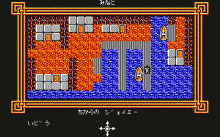
The year is 2025. An arms dealer escalates the tensions between East and West by developing a genetic weapon in a secret base at Kowloon Island. The United Nations react by sending in their best man, Jamie Starr. Unrelated to the Walled City itself, the first game to be located in the Kowloon peninsula - and indeed include the name as a part of its title - is this obscure turn-based RPG, Kyu-Ryu-Tou for the NEC PC88 and FM-77 machines.
The game is a sequel to Shangai, released the year before, featuring the same protagonist. Starcraft would also go on to produce a third instalment in 1987 named TO.KY.O. Clearly there wasn't much regard here from the developers part for geographic accuracy, as Kowloon is depicted here as being an island. While Hong Kong's southern territory is composed of an actual island, all the different areas named Kowloon are located in the mainland.
Riot City - Westone - 1991
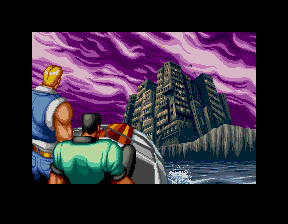

One of the most shameless specimens among a relatively long list of Final Fight clones, Riot City contains subtle references to Kowloon, though never referring to it by name. Two narcotics detectives are assigned with the mission of dismantling a cartel running a crime-ridden located in fictional Riot Island. This recurring yet geographically nonsensical notion of Kowloon as an island comes up here, yet again.
The final moment of the introduction sequence for this minor Sega arcade success shows both protagonists approaching a tight cluster of buildings whose source inspiration is quite unmistakable. Because Westone maintained ownership of most of this production's intellectual property, a later port to the PC Engine entitled Riot Zone was made possible with the help of Hudson soft.
Kowloon's Gate - Zeque - 1997
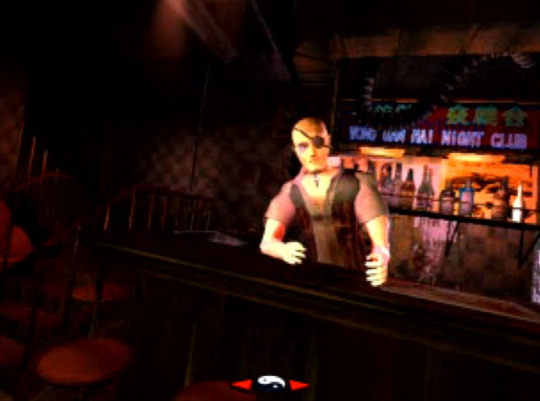
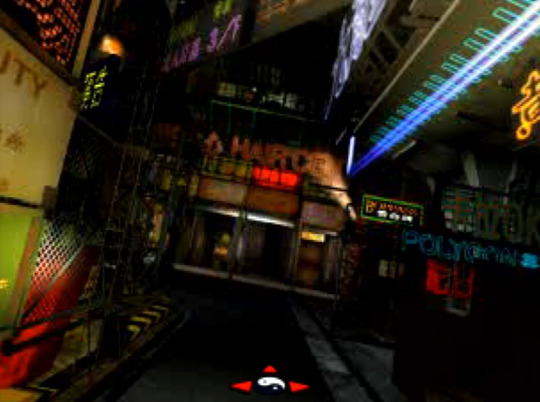
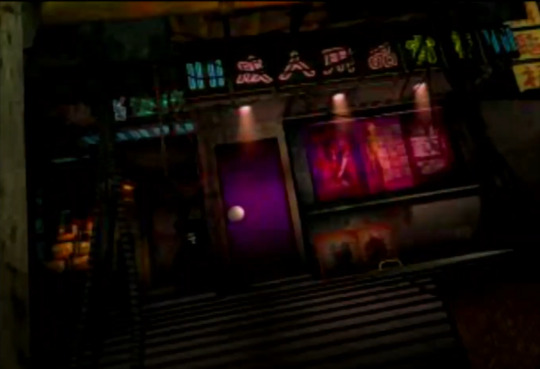
Reviving the Walled City through the lens of cybermystic surrealism, Kowloon's Gate is a dense, daunting adventure masterfully capturing the slum's dark and narrow recesses. This 1997 Japanese Playstation exclusive spans across four discs of unparalleled full motion 3D CGI spectacle, alternating with real-time 3D dungeons brimming with outlandish characters and concepts deeply inspired by Chinese history, geography and cultural traditions.
Ironically, Zeque managed to embed the theme of Feng-Shui, the ancient geomantic art seeking harmony between the individual and their surrounding space, into a story set in the world's most historically untidy district.
SaGa Frontier - Square - 1997
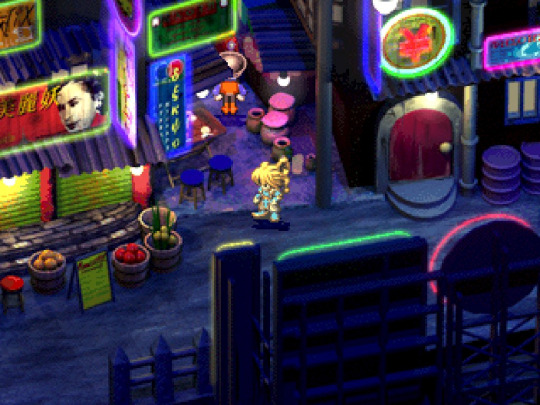
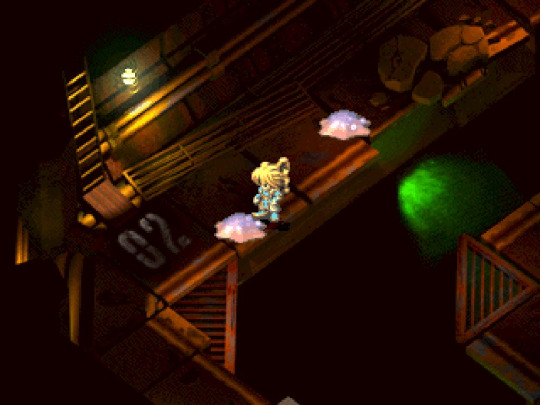
SaGa Frontier takes place in a solar system named The Regions, composed of multiple inhabited worlds for the player to explore, each with its different degree of civilizational development and culture. One of these planets goes by the suggestive name Kūron. Its pervasive neon light signs, food stalls, makeshift cabins and rooftop scaffolding instantly evoke the memory of China’s so-called city of darkness.
Shadow Hearts - Sacnoth - 2001

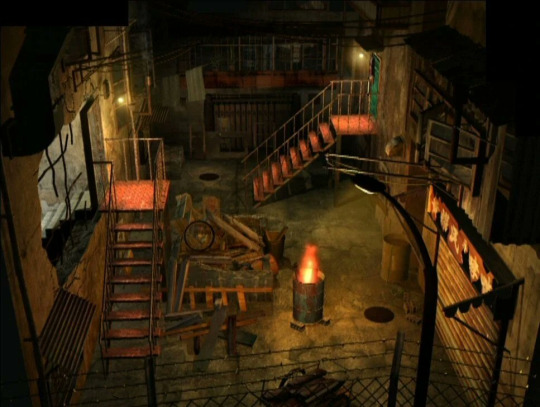
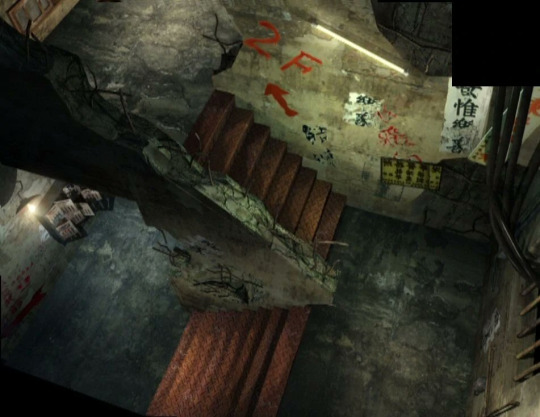
Shortly after the release of Koudelka, Sacnoth's initiated the development of Shadow Hearts, the first episode from a cult RPG trilogy exclusively designed for the Playstation 2. In good Japanese fashion, the game proposes an anachronistic yet visually suggestive depiction of Kowloon, portraying its architectural style and degree of decay as it existed in the late twentieth century, despite the fact that the game's events take place during the nineteen twenties.
Just as noteworthy is the almost complete absence of any inhabitants, which inadvertently make this portrayal of the quarter eerily reminiscent of the state in which it was found circa 1993 or 1994, as local authorities brought the long, arduous eviction project to a close.
Shenmue II - SEGA AM2 - 2001


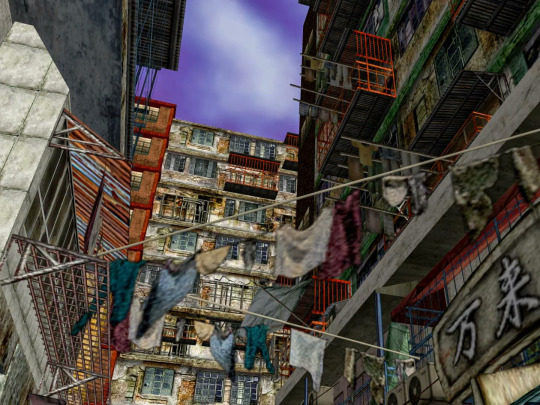
Shenmue II exhibits the most complete and period-accurate video game representation of Kowloon to date. While more recent games featuring this area may represent a number of its aspects with the aid of improved visual fidelity, none features it with such depth as this masterpiece of masterpieces. More than mere background decoration, Kowloon exists in the Shenmue series as a crucial, climacteric element of its modern epic narrative.
It is a well known fact that Yu Suzuki and his team conducted extensive research of the region so as to achieve a result that impresses even to this day. It must be noted, however, that they have similarly taken a fair share of creative liberty when converting the area to best align with the themes they wished to explore. Further reading is required for a more complete context in this regard, namely how this area ties with an early Dreamcast tech demo design which fans lovingly named Tower of Babel.
Ostensively, technical limitations did curtail the degree of precision in which the surrounding area could be replicated. The aerial view from the cutscene in which Ryo Hazuki arrives on location places Kowloon at an imaginary degree of elevation over surrounding vegetation. In the year of 1987, during which the game is set, the actual enclave stood perfectly levelled with a myriad of other modern buildings, undoubtedly more than could be reproduced under the circumstances.
These trifling considerations aside, Shenmue II entirely succeeds in capturing the vibrant life and mesmerizing beauty of the destitute and decayed urban agglomeration, in a way that it was deemed entirely impossible at the time of its release.
For reasons entirely related to per post content limitations imposed by Tumblr, this article will be continued in PART II.
#china#hong kong#kowloon#kowloon walled city#videogames#Kyu-Ryu-Tou#riot city#saga frontier#kowloon's gate#shenmue ii
372 notes
·
View notes
Text
Kowloon Walled City, photographs by Greg Girard




712 notes
·
View notes
Link
Today, Kowloon Walled City exists as a park. Its design is modelled on Jiangnan gardens from the early Qing Dynasty and is divided into eight landscape features. The fully restored yamen is the centrepiece, while paths and pavilions are named after streets and buildings in the walled city.
2 notes
·
View notes
Text

Infographic flyer of Kowloon Walled City 1898 - 1993 and now.
37 notes
·
View notes
Photo


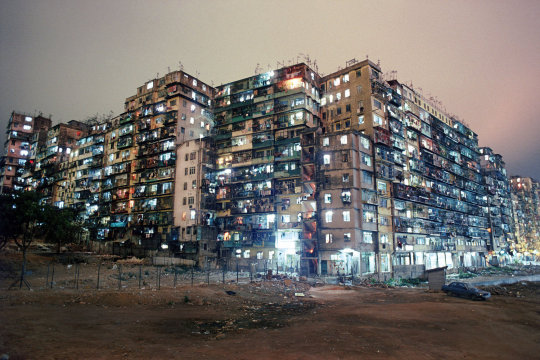
3 depictions of Hong Kong’s now demolished walled city:
1) Infographic by Aldofo Arranz, South China Morning Post
2) Kenji (manga) by Ryuchi Matsuda & illustrated by Yoshihide Fujiwara
3) Greg Girard, City of Darkness
#kowloon#walled city#cyberpunk#cityscape#hong kong#china#greg girard#Aldofo Arranz#Ryuchi matsuda#Yoshihide fujiwara
302 notes
·
View notes
Text
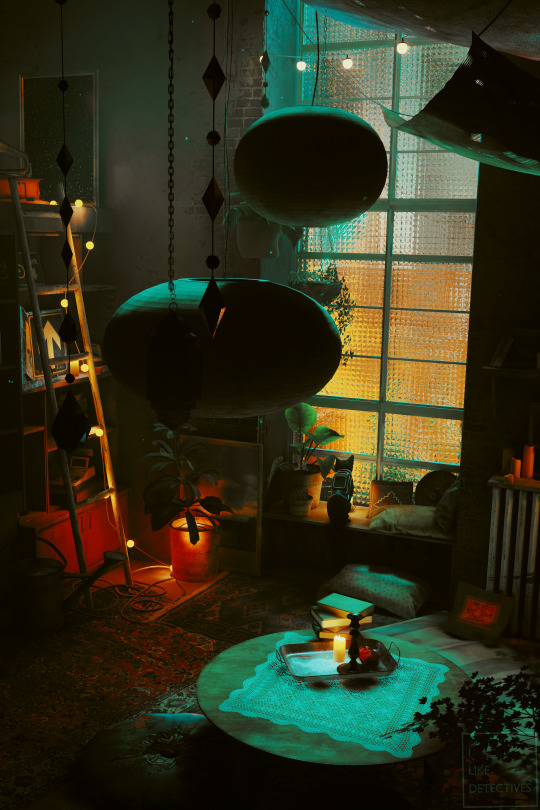

#stray game#cat#kitty#city#urban#kowloon#gamingedit#video games#screenshot#virtual photography#mine#mystray#mystraysceneries
692 notes
·
View notes
Text

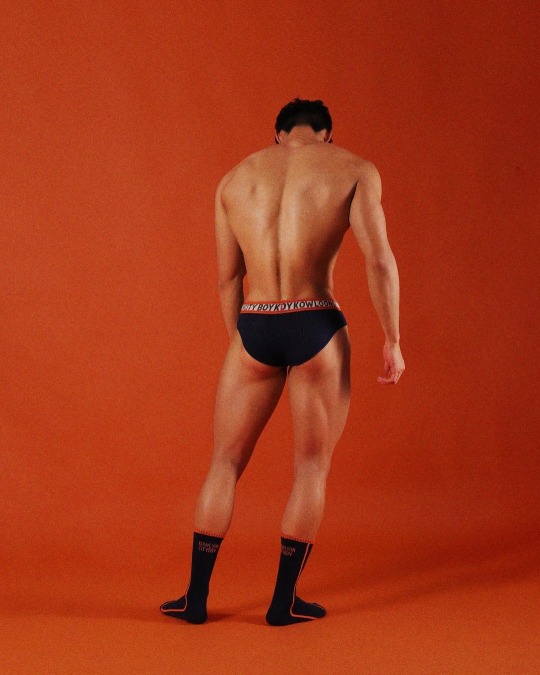


31 notes
·
View notes
